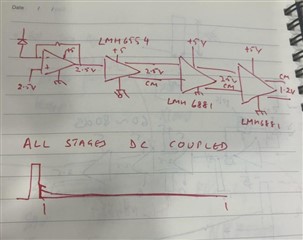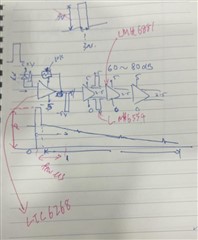Other Parts Discussed in Thread: LMH6881, , LMH32404, LMH32401, LMH34400, LMH6654
Dear Support,
I need some advice on this TIA design for OTDR.
For the following design block, i am using LTC6268 -> LMH6554 -> LMH6881 -> LMH6881.
One problem i faced is when there is an optical pulse arrived at 5V @3ns pulse. it will overdrive the circuit and go into saturation.
I am not able to find what is the fast overdrive recovery parameter for LMH6554, and LMH6881? Can you tell me what is the overdrive recovery value for LMH6554 and LMH6881 ?


The above circuit take microsecond to saturate before it can return to normal operation. Do you have recommendation how I can avoid the circuit enter into saturation? or any suggestion how to avoid that?
One of the competitor part i found is LT5554 which stated 5ns fast overdrive recovery which i think might be good to test out. Does TI have similar devices which fast overdrive recovery in ns?
Best Regards,
Felix


